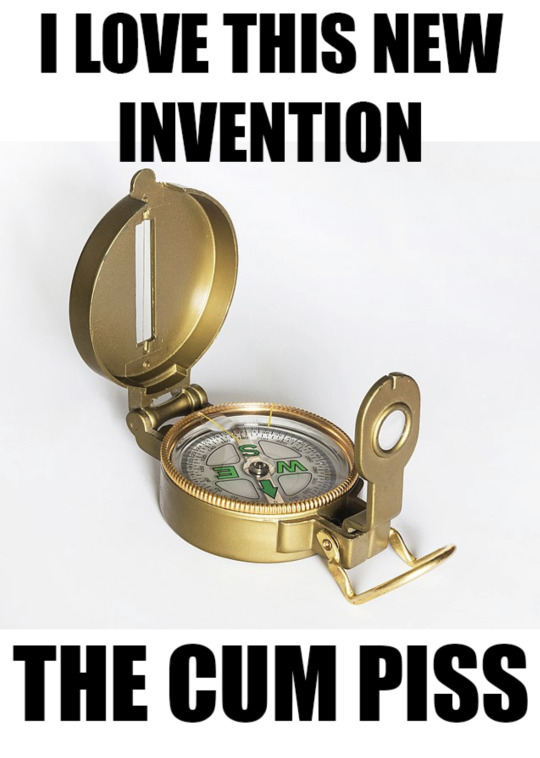#enjoy this post
Text
Disney World
James took Reg to Disney after Remus introduced it to the Marauders. Regulus denies his love for it but they end up moving to Florida and going every week.
That's how Harry become a Disney kid
#dead gay wizards#marauders#marauders era#the marauders#jegulus#harry potter#regulus black#james potter#james x regulus#disney#I know i left for like days#thats not my fault#i got surgery#anyway#mwah#enjoy this post
47 notes
·
View notes
Note
what kind of music do you think cas likes? i was like "what if he was into stuff like lana del rey?" but i think that he'd be into those cheesy love songs... like if he discovered filipino music he'd LOVE the romantic songs
OMG IVE BEEN THINKING ABOUT HIS MUSIC TASTE
i’ve talked with other fans and we’ve agreed he’d experiment with different varieties of music since he never completely got the chance to do so before; he was too busy being the grim reaper.
now that he’s no longer bound to 1 role for the entirety of his life… he’d explore. and the different genres of music represents the newfound freedom he experiences, how he’s no longer bound to one responsibility for the rest of his life
but i think eventually, he’d become infatuated with romantic songs, like you said. it not only represents how he’s finally finding himself as himself (and not being controlled by others) but also. His love for MC. anytime he listens to any cheesy pop song (no matter how old or sometimes unrelated) he finds a way to connect it back to MC. i even have a playlist for songs casper would like/remind me of him. it’s here: https://open.spotify.com/playlist/72dvGzi6A8Z7xoibjRQdPT?si=zWH6BdXFTi-uMl94GNVW6g&pi=u-0P1kPEsDRzaM
hope this answers ur question anon! feel free to ask more!!!
#anon#adwd#adwd grim#a date with death#adwd casper#a date with death casper#a date with death grim#adwd hcs#sorry anon for going overboard. i have lots of thoughts regarding this man and this is the first time i’ve let it out#and without censoring my rambling so im not talking 24/7 so thank u for this chance#if u have any other questions lmk!! i have plenty of ideas hehe#also!! please send me filipino reqs id love to add#another bc we all came up with is that casper is polyglot; death affects everyone so why be restricted to 1 tongue yknow?#i think all reapers are naturally polyglot; they’re born that way (mc is jealous)#anyway that’s enough of my rambling!!#enjoy this post
33 notes
·
View notes
Text
Just gonna say it: The coffee theory honestly takes away from the fact that Aziraphale made that decision, and ignores the fact that the decision was in character. It also ignores that: Both Crowley and Aziraphale were being idealistic.
They both got stuff to work on, and they both have shit to figure out, and both need to learn how to communicate AND listen.
I think the coffee theory is stupid honestly. That's all.
#if I wasn’t so tired I would have more to say#but like#yeah#the coffee theory is fun as a trope#but Aziraphale actually having basically religious trauma and religious guilt is just...way better writing and better story telling#hhhhhh im tired of seeing the coffee theory tbh#good omens#good omens 2#good omens s2#crowley#Aziraphale#coffee theory#enjoy this post#no i wont explain further
42 notes
·
View notes
Text
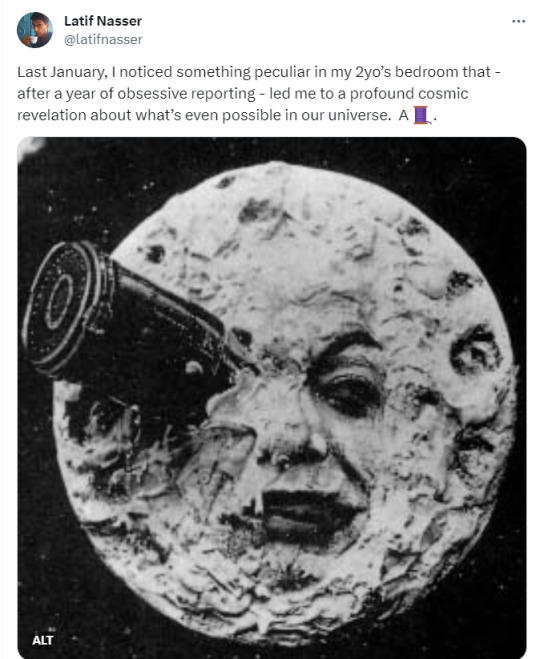

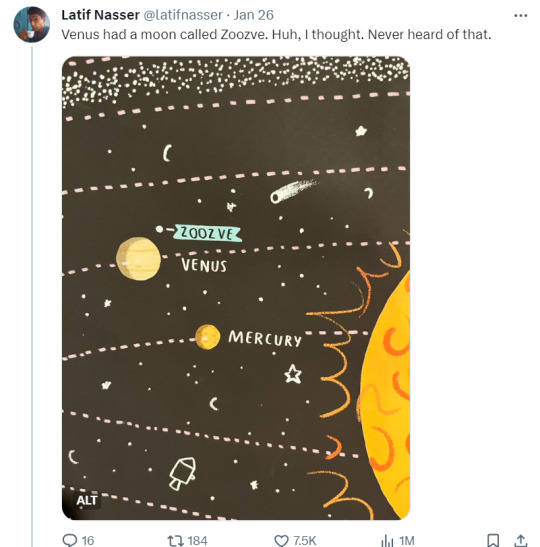
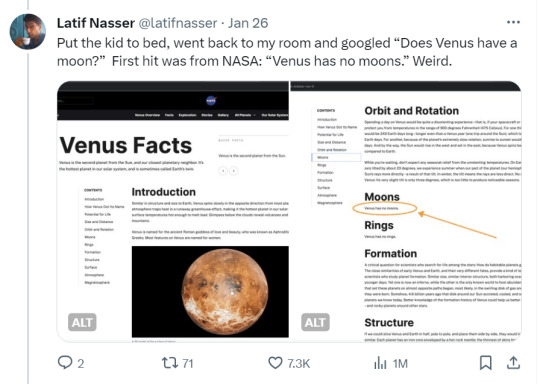
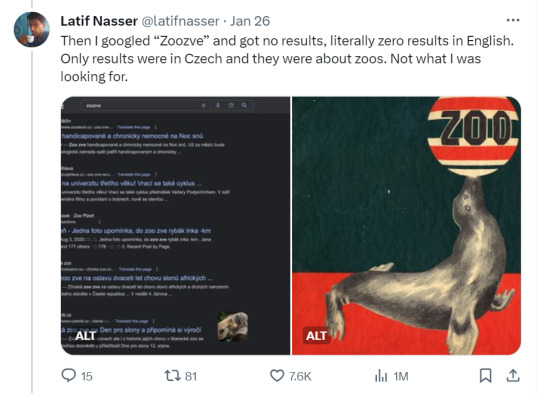
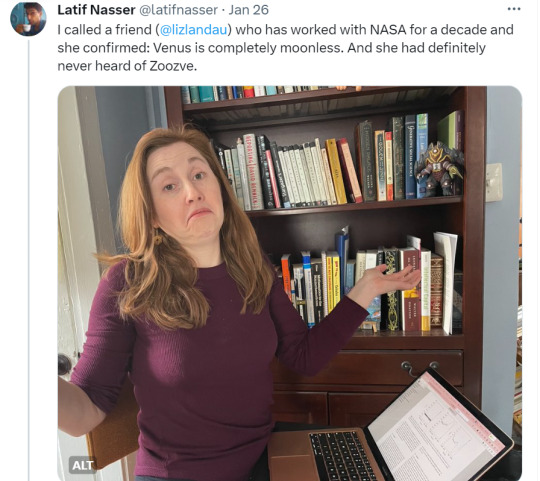



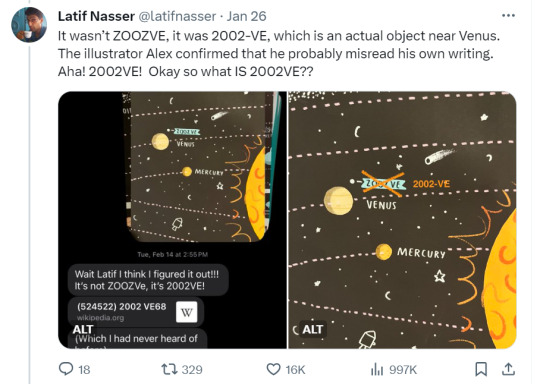


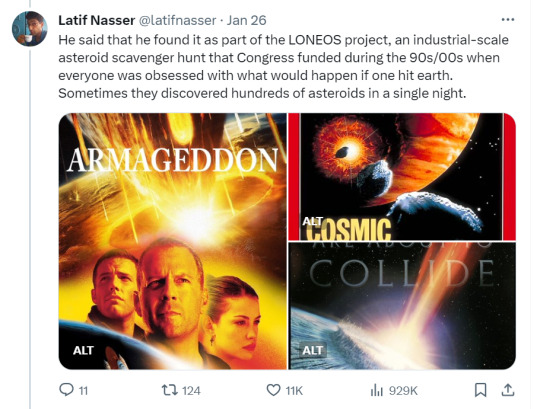

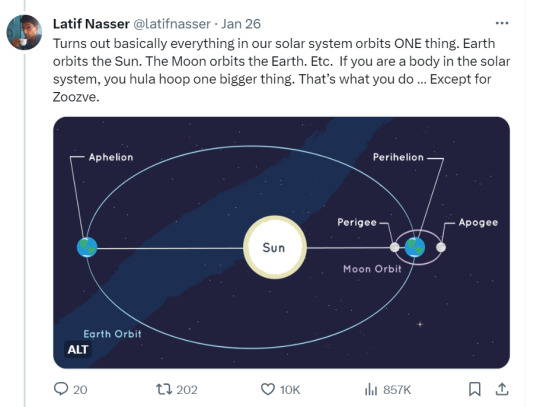
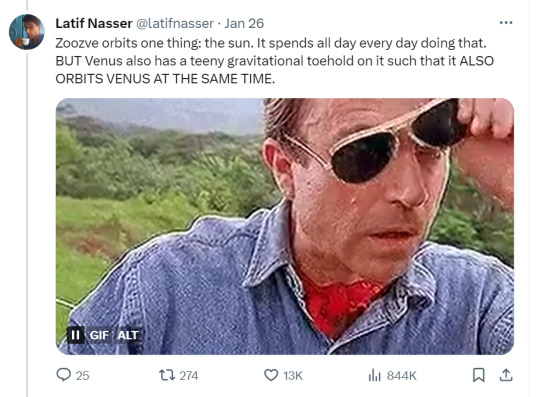
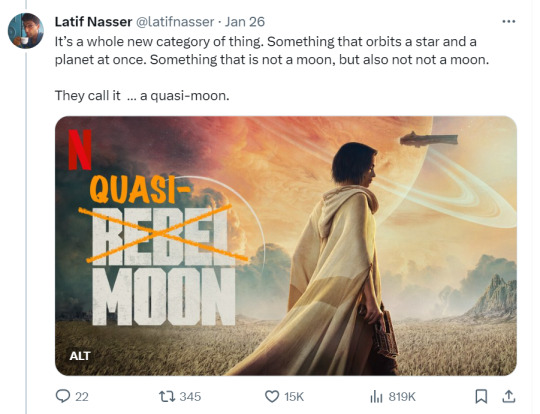



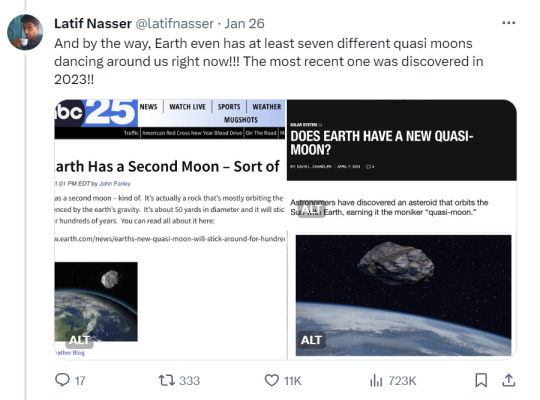

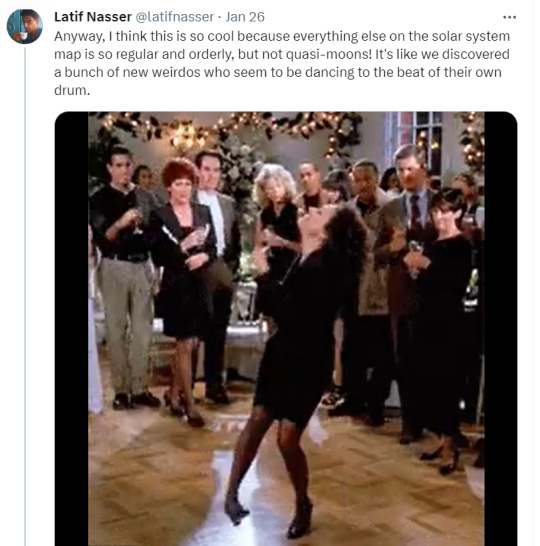
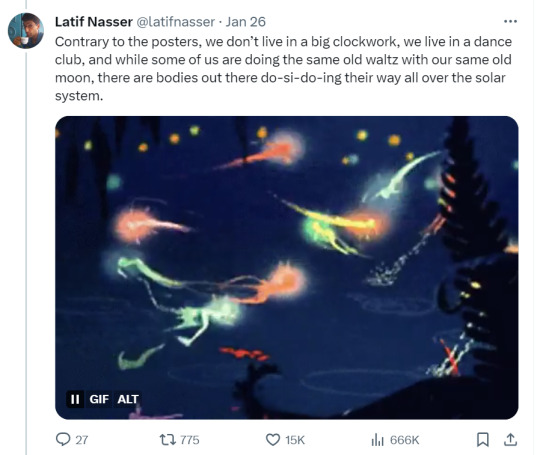
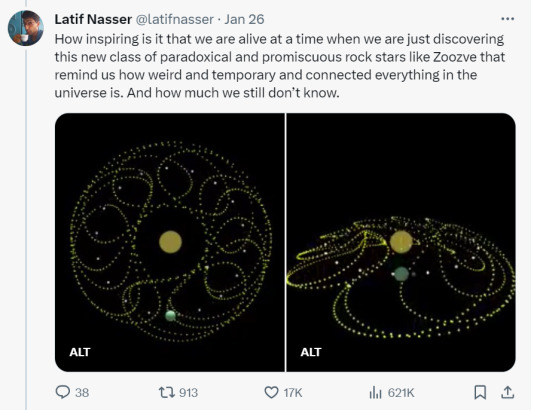
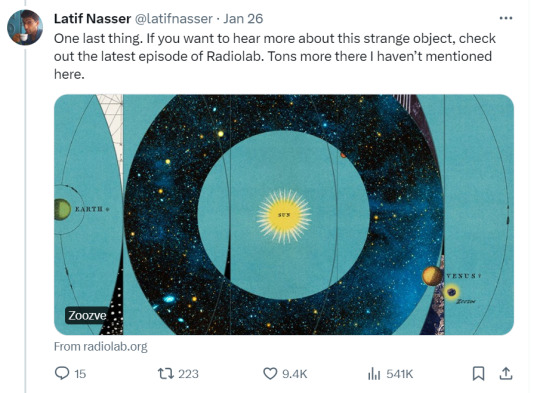
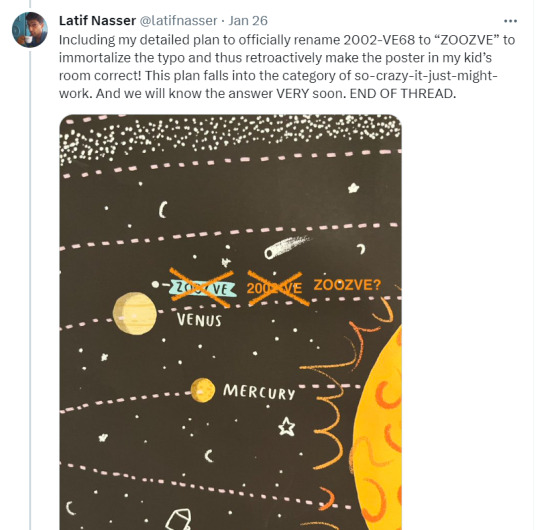
Zoozve, my beloved
#i cannot tell you how much this made me smile just bc it's so full of love#moon#venus#zoozve#long post#sorry about that it's very long but it's very entertaining i hope you enjoy this lil zoozve gem haha#astronomy#astrophysics#space
122K notes
·
View notes
Text
i do unironically think the best artists of our generation are posting to get 20 notes and 3 reblogs btw. that fanfic with like 45 kudos is some of the best stuff ever written. those OCs you carry around have some of the richest backstories and worldbuilding someone has ever seen. please do not think that reaching only a few people when you post means your art isn't worth celebrating.
#i often wonder about how many things would be considered classic or high art had they only received the marketing#how many short films that were made for class could have been the most powerful thing you'd ever seen? if you'd seen them?#“you know the greatest films of all time were never made” etc etc#but like. these works of art ARE being made. it's just enjoyed by a smaller audience with equal impact though#i think about this one furry i used to follow on insta who had the coolest worldbuilding ever. it's been years.#thought prompted by that sketch of nimona from ten years ago that was just for a character design#posted to the creator's tumblr and now it's nominated for best animated feature film at the oscars#and by the genuine emotional reaction a fan comic made me feel. how much work had gone into it. how beautiful it was to me.#idk what to tag this but i hope whoever needs to hear it does#writing#writer#fandom#fandom culture#artist
66K notes
·
View notes
Text
as an aroace, im particularly dangerous, because i wont fuck or marry. i only know how to kill.
#aroace#aromantic#asexual#asexuality#ace#aro#im so glad you guys are enjoying this stupid post i made at work#okay i wrote that at 3000 notes but what the FUCK is happening#10000 notes on this no effort fmk post and not one aspec i know irl#dgmw im still very happy that yall are enjoying this post but also like. come hang out with meeeeee :(
24K notes
·
View notes
Text
Wyll has the hardest entrance in bg3 and no one can argue with that. They had him entering the field like a smash bros character, like:

#I've been wanting to post this forever#enjoy my shitty edit#wyll ravengard#bg3 wyll#bg3#baldurs gate 3
14K notes
·
View notes
Text
April 4
Today in history has been a busy day in the world of radio and television station debuts.
WKRC-TV (April 4, 1949)
youtube
WKRC-TV, channel 12, Cincinnati, Ohio's ABC affiliate, signed on the air on this date 75 years ago. It is the second oldest television station that serves the Cincinnati area, and is still an ABC affiliate. The call sign was derived from the initials of the original owner of WKRC-AM, Clarence Ogden, who founded the Kodel Radio Company.
WYTV (April 4, 1953)
youtube
WYTV in Youngstown, Ohio, celebrates 71 years on the air today. It was originally known as WKST-TV for the first ten years that it was broadcasting, as it was partnered with WKST-AM 1200 in New Castle, Pennsylvania. The original call sign stood for the city of New Castle (KaSTle). Then, in 1963, the call letters changed to WYTV, simply standing for Youngstown TeleVision.
KFDA-TV (April 4, 1953)
youtube
Along with WYTV, Amarillo, Texas' CBS affiliate KFDA-TV celebrates its 71st birthday today. It is the second television station to sign on and serve the market in Amarillo, the first being KAMR-TV, who signed on in March of the same year. The call sign has stayed the same throughout the 71 years that KFDA-TV has broadcasted, the Amarillo Broadcasting Company suggesting they use the same call letters as their radio station that had been broadcasting since 1939. Unfortunately, we are unsure of what the call sign represents.
WPWR-TV (April 4, 1982)
youtube
A young station compared to many, WPWR-TV, the MyNetworkTV affiliate in Gary, Indiana, celebrates 42 years as a station today. It began as an independent station splitting time between the English WPWR-TV, and the Spanish language WBBS-TV. It then became an affiliate of UPN in 1995, MyNetworkTV in 2006, the CW IN 2016, then made a return to MyNetworkTV. These days, it shares a frequency with WFLD, Chicago's FOX affiliate. The call letters are easy to figure out -- PoWeR.
Radio stations:
Many radio stations around North America celebrate their anniversaries today. These include:
WLTJ, 92.9 FM, Pittsburgh, PA (1942, 82 years)
WJFP, 740 AM, Chester, PA (1948, 76 years)
WSIP, 1490 AM, Paintsville, KY (1949, 75 years)
CFAN, 99.3 FM, Miramichi, NB (1949, 75 years)
WJFK, 106.7 FM, Manassas, VA (1961, 63 years)
WUPR, 1530 AM, Utuado, PR (1964, 60 years)
KUCO, 90.1 FM, Oklahoma City, OK (1966, 58 years)
CFXE, 94.3 FM, Edson, AB (1968, 56 years)
WOHF, 92.1 FM, Bellevue, OH (1973, 51 years)
WOES, 91.3 FM, Ovid-Elsie, MI (1978, 46 years)
KAGJ, 88.9 FM, Ephraim, UT (1994, 30 years)
0 notes
Text

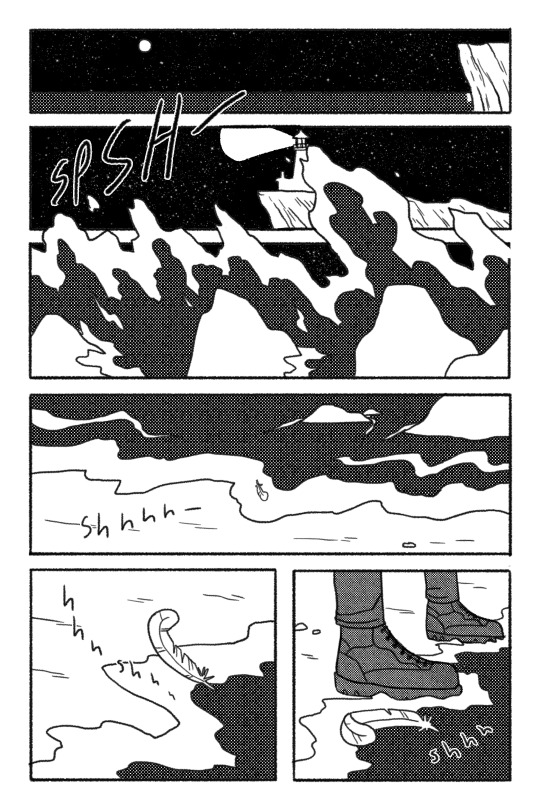
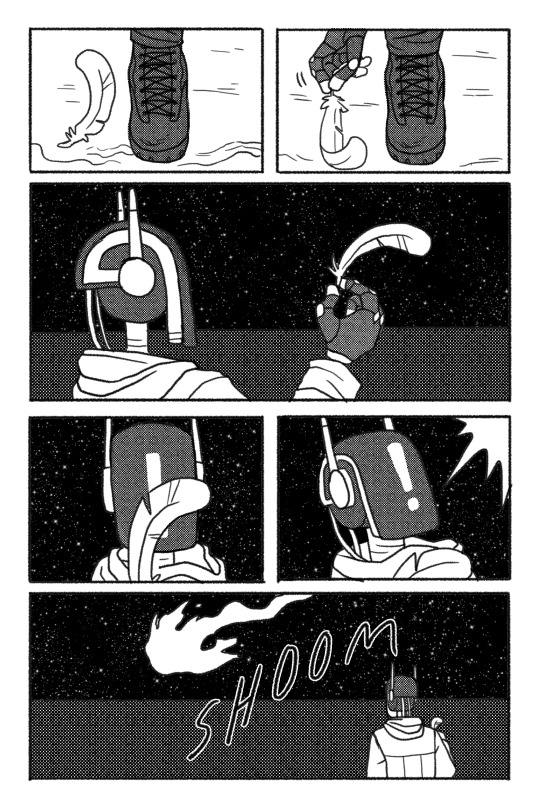







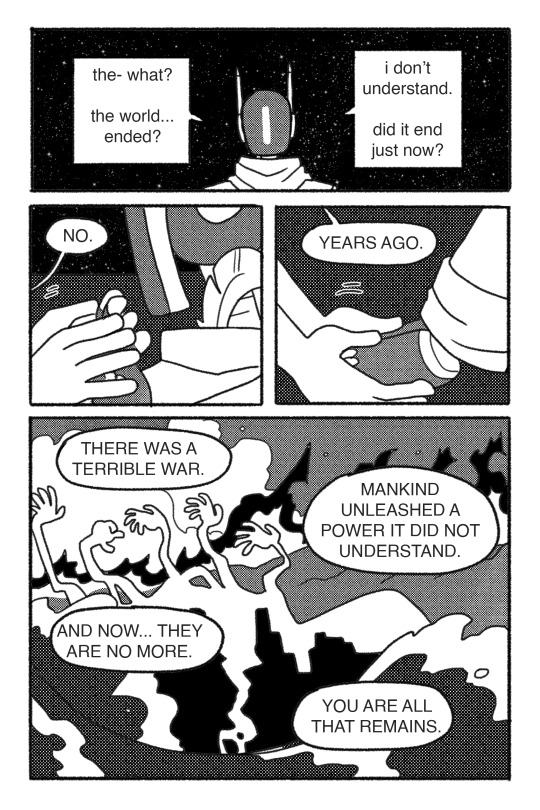




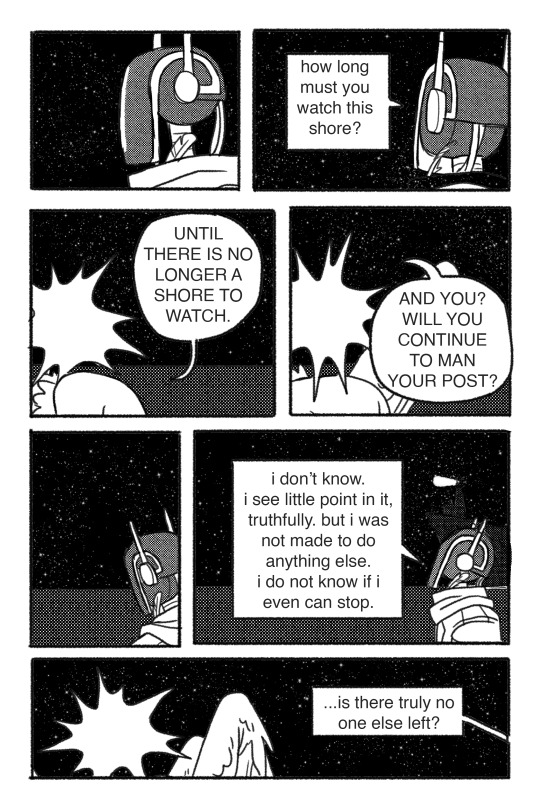



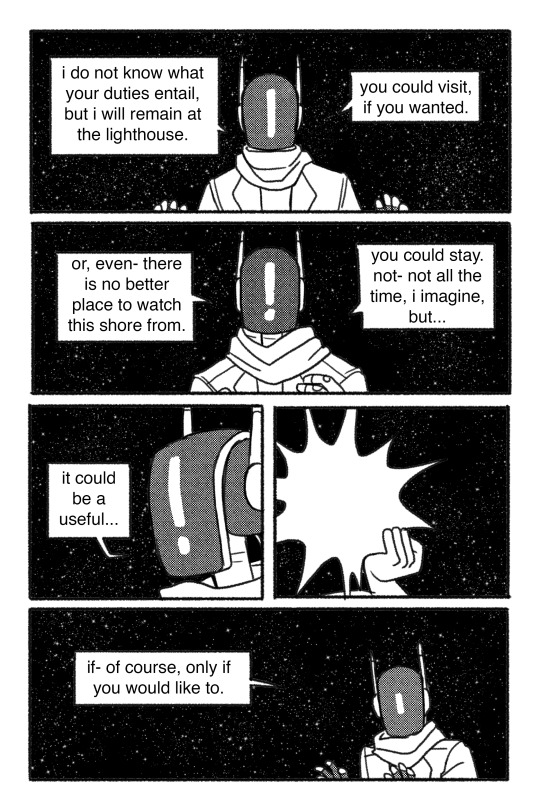
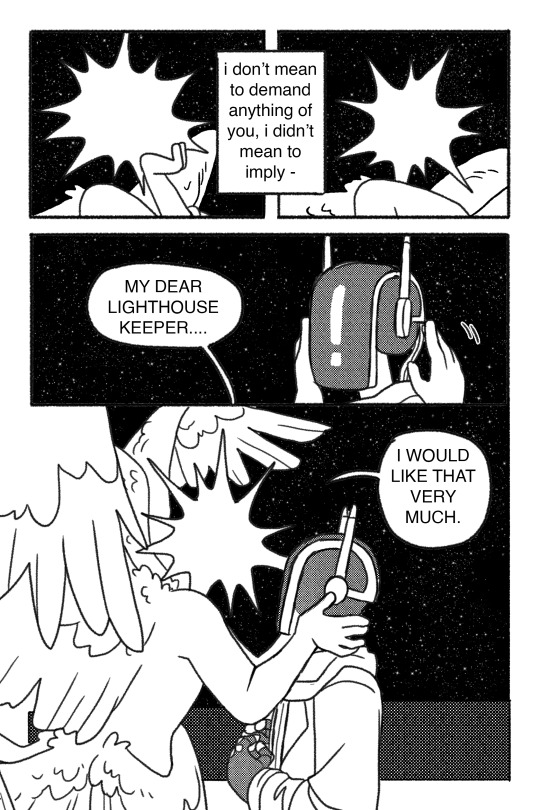

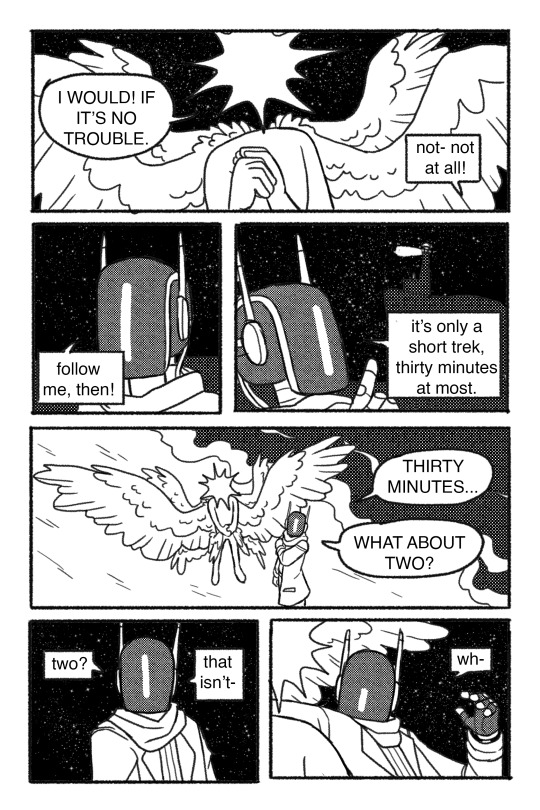
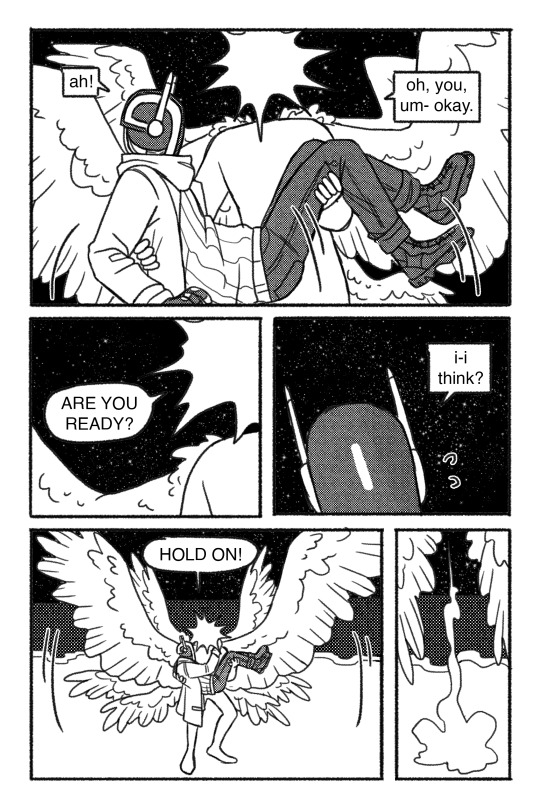

Keeper -- a short comic about an angel meeting a robotic lighthouse keeper that doesn't know the world has already ended. Made in about 18 hours for a 24-hour 24-page* black and white comic challenge (that I arrived late to, ha.)
*the actual submission does not include the cover, which was created after the fact for this post.
This was a really great learning experience as someone who's... never really made a completed comic. I ended up really attached to the story by the end of the project (possibly due to all-nighter deliriousness lol) and ultimately am very proud of what I made.There are some things I'd still like to change, particularly text placement, but in keeping with the spirit of the challenge I've elected to leave it as is.
#sparks art#comic#angel#robot#my art#my comics#keeper: the angel#keeper: the lighthouse keeper#my ocs#hoogh. this was a grind yall lmao. but i am pleased with it#i hope you enjoy :pray: also keep your fingers crossed for me that this wins the contest#like it. it wont. because i am up against actual SEQA kids that know what theyre doing. and i dont actually mind really#but it would be funny#long post#very long post#sorry#i hope the readmore works
31K notes
·
View notes
Text

#musicals#theatre#movies#memes#funny#Twitter#les mis#bread#shit post#French class#i have a sub rn and I’m too bored enjoy the shitpost
24K notes
·
View notes
Text
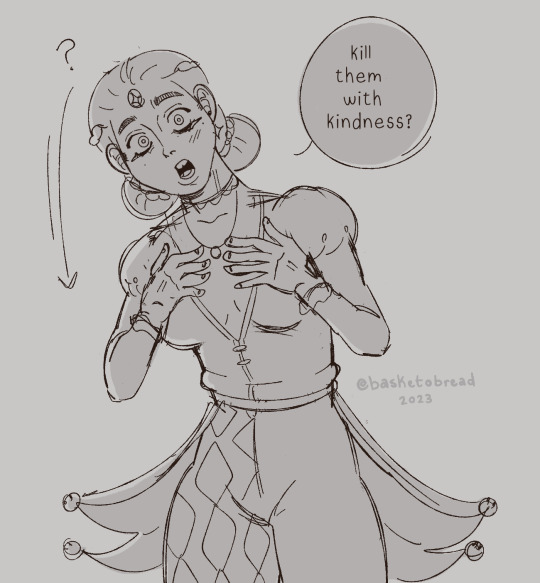


sometimes when the enemy is at like 1 hp, i like to hit them with some good ol vicious mockery because nothing is funnier to me than actually obliterating someone into the next life with a yo mama joke
#baldur’s gate 3#bg3#bg3 fanart#bg3 art#baldurs gate#tav#bg3 tav#bg3 oc#astarion#bg3 astarion#astarion ancunin#astarion x tav#dnd#dnd art#dnd bard#dnd oc#lotus posting#bob the artist#also thank you for the support recently!!!!#im new here so i didnt expect to already have ppl enjoy my art :) very grateful <33
17K notes
·
View notes
Text
What does life in North Korea look like outside of Pyongyang? 🇰🇵
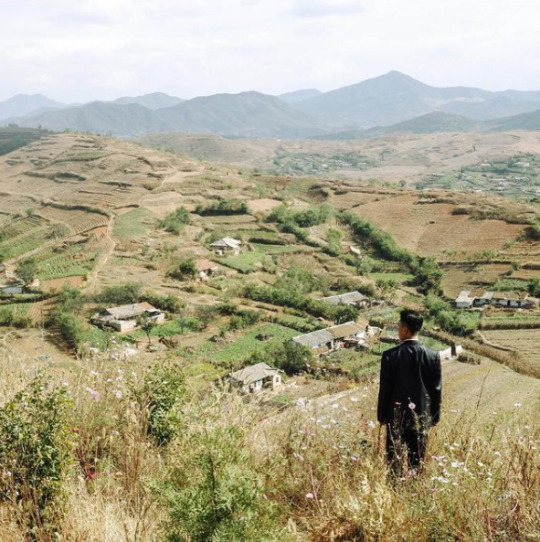
Hey, I'm back again with a very scary "tankie" post that asks you to think of North Koreans as people, and to consider their country not as a cartoonish dystopia, but as a nation that, like any other place on earth, has culture, traditions, and history.
Below is a collection of pictures from various cities and places in North Korea, along with a brief dive into some of the historical events that informs life in the so-called "hermit kingdom."
Warning: very long post
Kaesong, the historic city
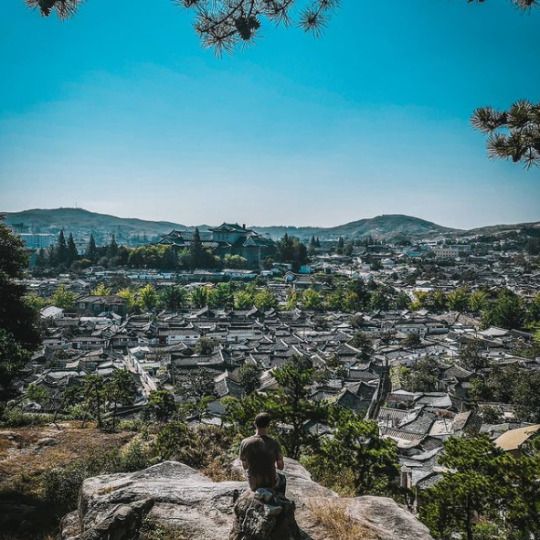
Beginning this post with Kaesong, one of the oldest cities in Korea. It's also one of the few major cities in the DPRK (i.e. "North Korea") that was not completely destroyed during the Korean war.
Every single city you'll see from this point on were victims of intense aerial bombardments from the U.S. and its allies, and had to be either partially or completely rebuilt after the war.
From 1951 to 1953, during what has now become known as the "forgotten war" in the West, the U.S. dropped 635,000 tons of bombs over Korea — most of it in the North, and on civilian population centers. An additional 32,000 tons of napalm was also deployed, engulfing whole cities in fire and inflicting people with horrific burns:
For such a simple thing to make, napalm had horrific human consequences. A bit of liquid fire, a sort of jellied gasoline, napalm clung to human skin on contact and melted off the flesh. Witnesses to napalm's impact described eyelids so burned they could not be shut and flesh that looked like "swollen, raw meat." - PBS
Ever wondered why North Koreans seem to hate the U.S so much? Well...
Keep in mind that only a few years prior to this, the U.S. had, as the first and only country in the world, used the atomic bomb as a weapon of war. Consider, too, the proximity between Japan and Korea — both geographically and as an "Other" in the Western imagination.
As the war dragged on, and it became clear the U.S. and its allies would not "win" in any conventional sense, the fear that the U.S. would resort to nuclear weapons again loomed large, adding another frightening dimension to the war that can probably go a long way in explaining the DPRK's later obsession with acquiring their own nuclear bomb.
But even without the use of nuclear weapons, the indiscriminate attack on civilians, particularly from U.S. saturation bombings, was still horrific:
"The number of Korean dead, injured or missing by war’s end approached three million, ten percent of the overall population. The majority of those killed were in the North, which had half of the population of the South; although the DPRK does not have official figures, possibly twelve to fifteen percent of the population was killed in the war, a figure close to or surpassing the proportion of Soviet citizens killed in World War II" - Charles K. Armstrong
On top of the loss of life, there's also the material damage. By the end of the war, the U.S. Air Force had, by its own estimations, destroyed somewhere around 85% of all buildings in the DPRK, leaving most cities in complete ruin. There are even stories of U.S. bombers dropping their loads into the ocean because they couldn't find any visible targets to bomb.
What you'll see below of Kaesong, then, provides both a rare glimpse of what life in North Korea looked like before the war, and a reminder of what was destroyed.

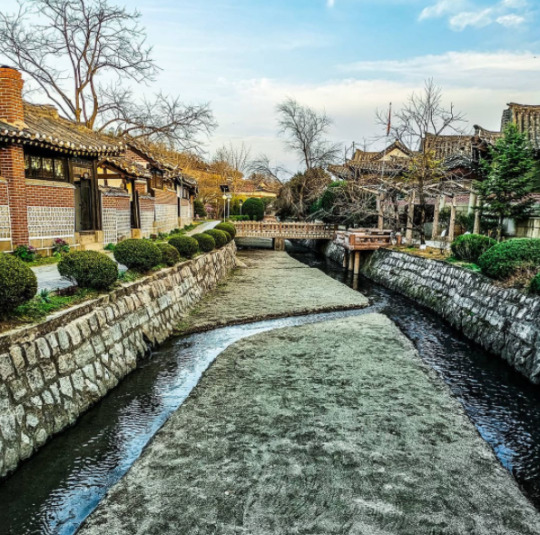

Kaesong's main street, pictured below.
Due the stifling sanctions imposed on the DPRK—which has, in various forms and intensities, been in effect since the 1950s—car ownership is still low throughout the country, with most people getting around either by walking or biking, or by bus or train for longer distances.
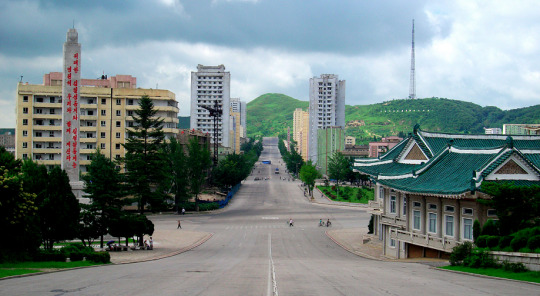
Kaesong, which is regarded as an educational center, is also notable for its many Koryŏ-era monuments. A group of twelve such sites were granted UNESCO world heritage status in 2013.
Included is the Hyonjongnung Royal Tomb, a 14th-century mausoleum located just outside the city of Kaesong.
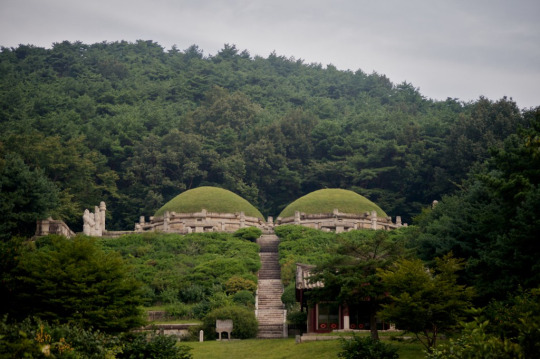
One of the statues guarding the tomb.
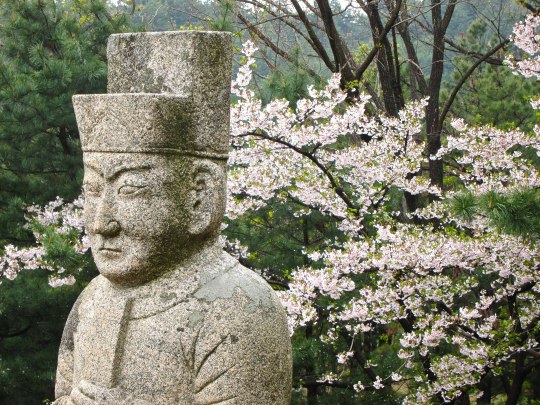
Before moving on the other cities, I also wanted to showcase one more of the DPRK's historical sites: Pohyonsa, a thousand-year-old Buddhist temple complex located in the Myohyang Mountains.

Like many of DPRK's historic sites, the temple complex suffered extensive damage during the Korean war, with the U.S. led bombings destroying over half of its 24 pre-war buildings.
The complex has since been restored and is in use today both as a residence for Buddhist monks, and as a historic site open to visitors.


Hamhung, the second largest city in the DPRK.
A coastal city located in the South Hamgyŏng Province. It has long served as a major industrial hub in the DPRK, and has one of the largest and busiest ports in the country.
Hamhung, like most of the coastal cities in the DPRK, was hit particularly hard during the war. Through relentless aerial bombardments, the US and its allies destroyed somewhere around 80-90% percent of all buildings, roads, and other infrastructure in the city.
Now, more than seventy years later, unexploded bombs, mortars and pieces of live ammunition are still being unearthed by the thousands in the area. As recently as 2016, one of North Korea's bomb squads—there's one in every province, faced with the same cleanup task—retrieved 370 unexploded mortar rounds... from an elementary school playground.
Experts in the DPRK estimate it will probably take over a hundred years to clean up all the unexploded ordnance—and that's just in and around Hamhung.
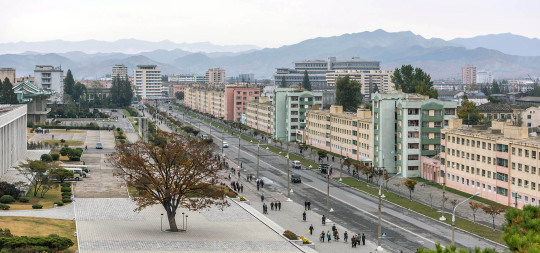

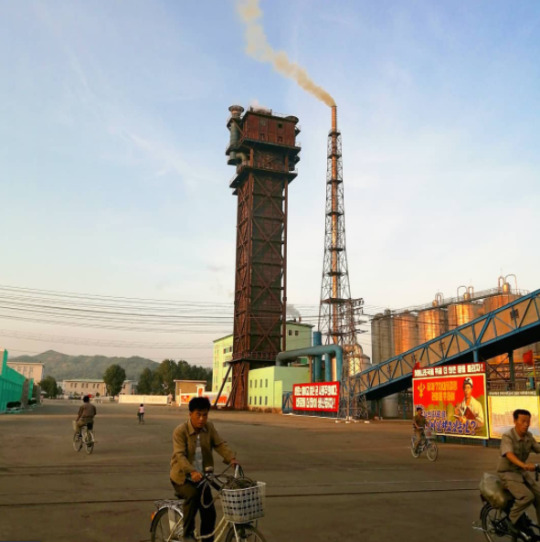
Hamhung's fertilizer plant, the biggest in North Korea.
When the war broke out, Hamhung was home to the largest nitrogen fertilizer plant in Asia. Since its product could be used in the creation of explosives, the existence of the plant is considered to have made Hamhung a target for U.S. aggression (though it's worth repeating that the U.S. carried out saturation bombings of most population centers in the country, irrespective of any so-called 'military value').
The plant was immediately rebuilt after the war, and—beyond its practical use—serves now as a monument of resistance to U.S. imperialism, and as a functional and symbolic site of self-reliance.
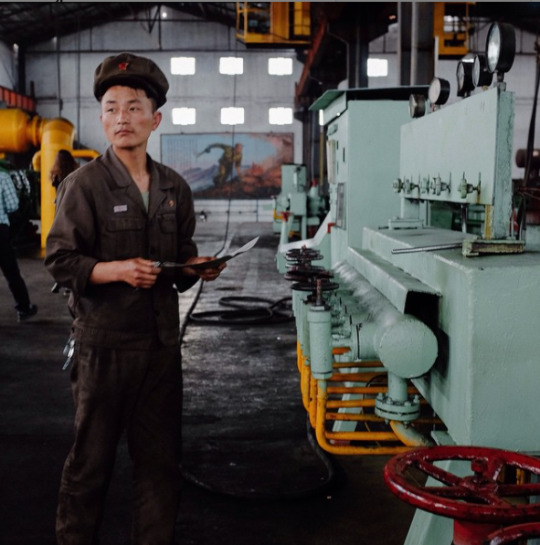
Chongjin, the third largest city in the DPRK.
Another coastal city and industrial hub. It underwent a massive development prior to the Korean war, housing around 300,000 people by the time the war broke out.
By 1953, the U.S. had destroyed most of Chongjin's industry, bombed its harbors, and killed one third of the population.
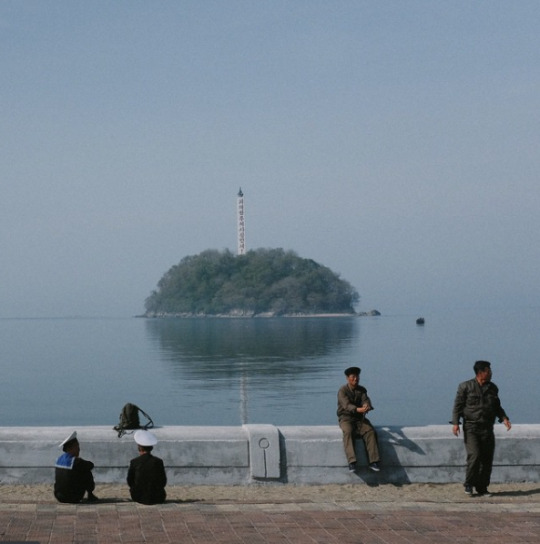
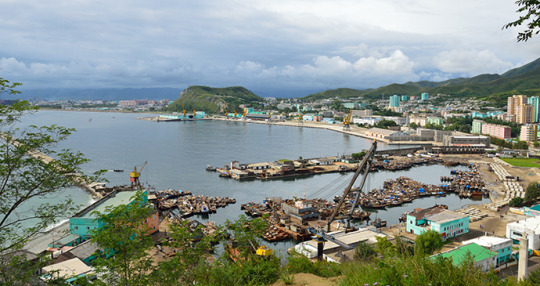

Wonsan, a rebuilt seaside city.
The city of Wonsan is a vital link between the DPRK's east and west coasts, and acts today as both a popular holiday destination for North Koreans, and as a central location for the country's growing tourism industry.
Considered a strategically important location during the war, Wonsan is notable for having endured one of the longest naval blockades in modern history, lasting a total of 861 days.
By the end of the war, the U.S. estimated that they had destroyed around 80% of the city.
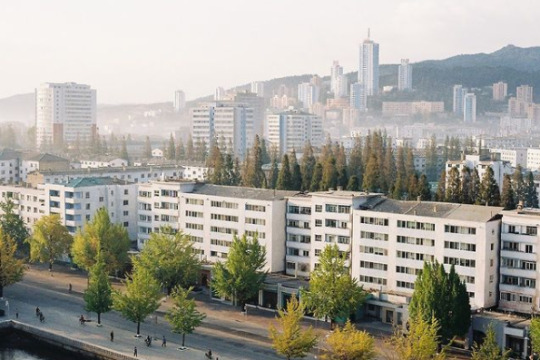

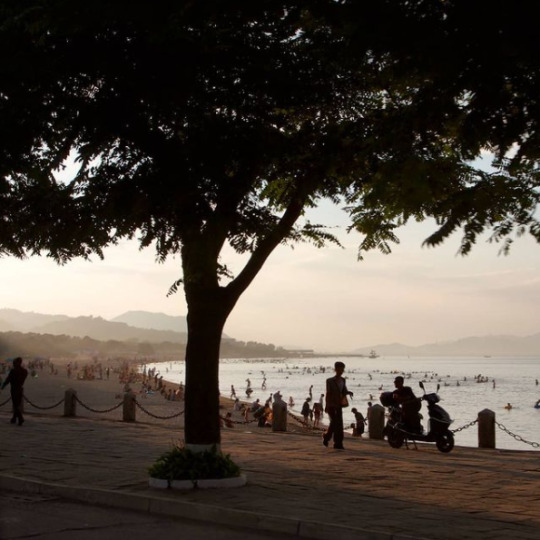

Masikryong Ski Resort, located close to Wonsan. It opened to the public in 2014 and is the first, I believe, that was built with foreign tourists in mind.
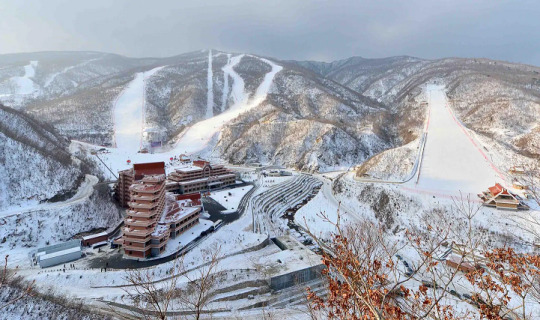
Sariwon, another rebuilt city
One of the worst hit cities during the Korean War, with an estimated destruction level of 95%.
I've written about its Wikipedia page here before, which used to mockingly describe its 'folk customs street'—a project built to preserve old Korean traditions and customs—as an "inaccurate romanticized recreation of an ancient Korean street."
No mention, of course, of the destruction caused by the US-led aerial bombings, or any historical context at all that could possibly even hint at why the preservation of old traditions might be particularly important for the city.
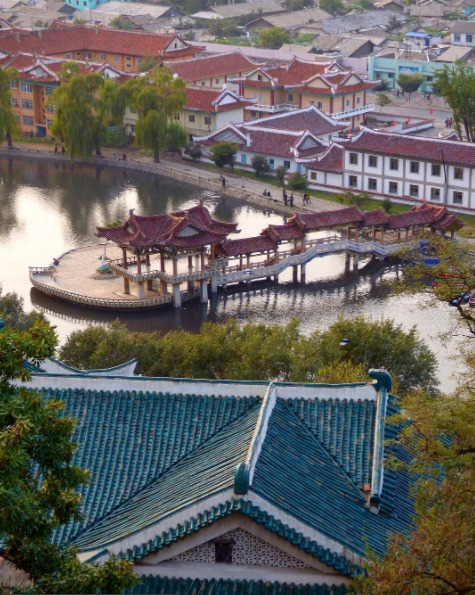

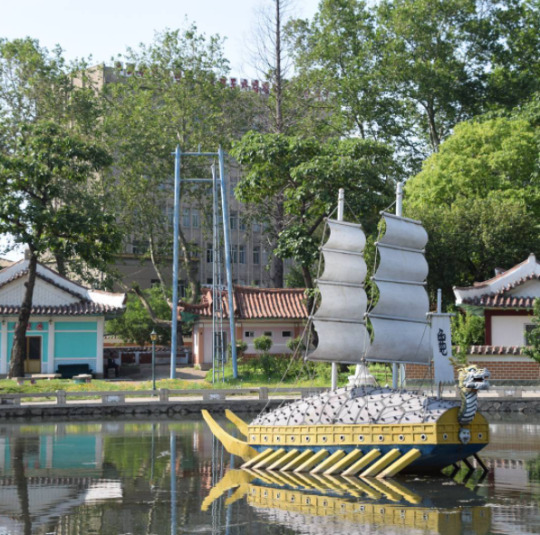
Life outside of the towns and cities
In the rural parts of the DPRK, life primarily revolves around agriculture. As the sanctions they're under make it difficult to acquire fuel, farming in the DPRK relies heavily on manual labour, which again, to avoid food shortages, requires that a large portion of the labour force resides in the countryside.
Unlike what many may think, the reliance on manual labour in farming is a relatively "new" development. Up until the crisis of the 1990s, the DPRK was a highly industrialized nation, with a modernized agricultural system and a high urbanization rate. But, as the access to cheap fuel from the USSR and China disappeared, and the sanctions placed upon them by Western nations heavily restricted their ability to import fuel from other sources, having a fuel-dependent agricultural industry became a recipe for disaster, and required an immediate and brutal restructuring.
For a more detailed breakdown of what lead to the crisis in the 90s, and how it reshaped the DPRKs approach to agriculture, check out this article by Zhun Xu.

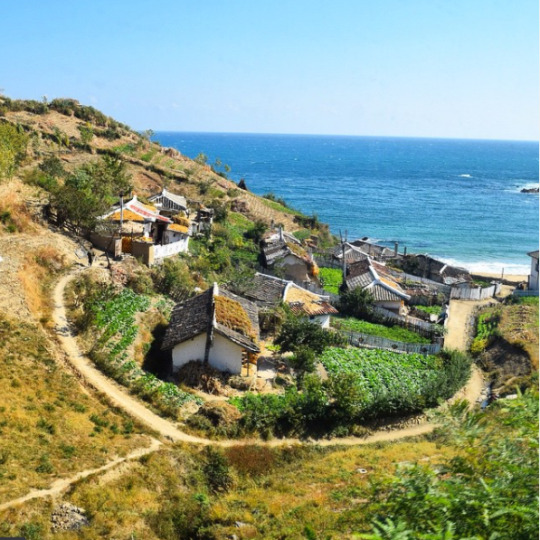
Some typical newly built rural housing, surrounded by farmland.
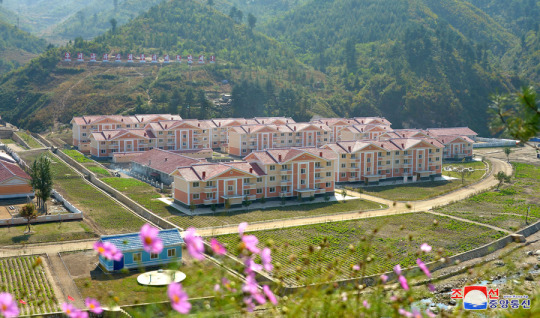
Tumblr only allows 20 pictures per post, but if you want to see more pictures of life outside Pyongyang, check out this imgur album.
#dprk#north korea#i've had this post unfinished in drafts for almost a year#also sorry about the spelling and potential formatting issues it's a nightmare to edit at this point#it was literally just meant to be a collection of picture and then the writing just sort of happened#enjoy the brief heritageposts history lesson i guess
5K notes
·
View notes
Text
saying “visual style" because, for example, if you would swap your current wardrobe for an identical, ethically made counterpart, there would be no visible change
#bearer of the curse#polls#I said a lot bc I don't wear a lot of what I enjoy due to sensory stuff and also like ... ethical considerations#btw I made this post bc I really don't like how some people think that people 'dress boring' simply bc theyre boring#like. fashion is not as accessible as it should be! to most people!#so i wanted to see how people felt#also fat people I love you I know a massive part of this inaccessibility is fatphobia in the fashion industry
6K notes
·
View notes
Text
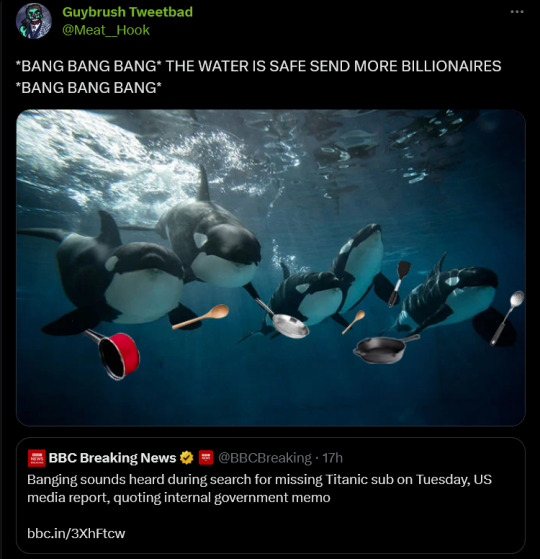
#alt text added#oceangate#i have mostly posted this to send to a mutual but maybe others would enjoy so#titanic
23K notes
·
View notes
Text
the thing is that they're so fascinated by sex, they love sex, they can't imagine a world without sex - they need sex to sell things, they need sex to be part of their personality, they need sex to prove their power - but they hate sex. they are disgusted by it.
sex is the only thing that holds their attention, and it is also the thing that can never be discussed directly.
you can't tell a child the normal names for parts of their body, that's sexual in nature, because the body isn't a body, it's a vessel of sex. it doesn't matter that it's been proven in studies (over and over) that kids need to know the names of their genitals; that they internalize sexual shame at a very young age and know it's 'dirty' to have a body; that it overwhelmingly protects children for them to have the correct words to communicate with. what matters is that they're sexual organs. what matters is that it freaks them out to think about kids having body parts - which only exist in the context of sex.
it's gross to talk about a period or how to check for cancer in a testicle or breast. that is nasty, illicit. there will be no pain meds for harsh medical procedures, just because they feature a cervix.
but they will put out an ad of you scantily-clad. you will sell their cars for them, because you have abs, a body. you will drip sex. you will ooze it, like a goo. like you were put on this planet to secrete wealth into their open palms.
they will hit you with that same palm. it will be disgusting that you like leather or leashes, but they will put their movie characters in leather and latex. it will be wrong of you to want sexual freedom, but they will mark their success in the number of people they bed.
they will crow that it's inappropriate for children so there will be no lessons on how to properly apply a condom, even to teens. it's teaching them the wrong things. no lessons on the diversity of sexual organ growth, none on how to obtain consent properly, none on how to recognize when you feel unsafe in your body. if you are a teenager, you have probably already been sexualized at some point in your life. you will have seen someone also-your-age who is splashed across a tv screen or a magazine or married to someone three times your age. you will watch people pull their hair into pigtails so they look like you. so that they can be sexy because of youth. one of the most common pornography searches involves newly-18 young women. girls. the words "barely legal," a hiss of glass sand over your skin.
barely legal. there are bills in place that will not allow people to feel safe in their own bodies. there are people working so hard to punish any person for having sex in a way that isn't god-fearing and submissive. heteronormative. the sex has to be at their feet, on your knees, your eyes wet. when was the first time you saw another person crying in pornography and thought - okay but for real. she looks super unhappy. later, when you are unhappy, you will close your eyes and ignore the feeling and act the role you have been taught to keep playing. they will punish the sex workers, remove the places they can practice their trade safely. they will then make casual jokes about how they sexually harass their nanny.
and they love sex but they hate that you're having sex. you need to have their ornamental, perfunctory, dispassionate sex. so you can't kiss your girlfriend in the bible belt because it is gross to have sex with someone of the same gender. so you can't get your tubes tied in new england because you might change your mind. so you can't admit you were sexually assaulted because real men don't get hurt, you should be grateful. you cannot handle your own body, you cannot handle the risks involved, let other people decide that for you. you aren't ready yet.
but they need you to have sex because you need to have kids. at 15, you are old enough to parent. you are not old enough to hear the word fuck too many times on television.
they are horrified by sex and they never stop talking about it, thinking about it, making everything unnecessarily preverted. the saying - a thief thinks everyone steals. they stand up at their podiums and they look out at the crowd and they sign a bill into place that makes sexwork even more unsafe and they stand up and smile and sign a bill that makes gender-affirming care illegal and they get up and they shrug their shoulders and write don't say gay and they get up, and they make the world about sex, but this horrible, plastic vision of it that they have. this wretched, emotionless thing that holds so much weight it's staggering. they put their whole spine behind it and they push and they say it's normal!
this horrible world they live in. disgusted and also obsessed.
#this shifts gender so much bc it actually affects everyone#yes it's a gendered phenomenon. i have written a LOT about how different genders experience it. that's for a different post.#writeblr#ps my comments about seeing someone cry -- this is not to shame any person#and on this blog we support workers.#at the same time it's a really hard experience to see someone that looks like you. clearly in agony. and have them forced to keep going.#when you're young it doesn't necessarily look like acting. it looks scary. and that's what this is about - the fact that teens#have likely already been exposed to that definition of things. because the internet exists#and without the context of healthy education. THAT is the image burned into their minds about what it looks like.#it's also just one of those personal nuanced biases -#at 19 i thought it was normal to be in pain. to cry. to not-like-it. that it should be perfunctory.#it was what i had seen.#and it didn't help that my religious upbringing was like . 'yeah that's what you get for premarital. but also for the reference#we do think you should never actually enjoy it lol'#so like the point im making is that ppl get exposed to that stuff without the context of something more tender#and assume .... 'oh. so it's fine i am not enjoying myself'. and i know they do because I DID.#he was my first boyfriend. how was i supposed to know any different#i didn't even have the mental wherewithal to realize im a lesbian . like THAT used to suffering.
28K notes
·
View notes
